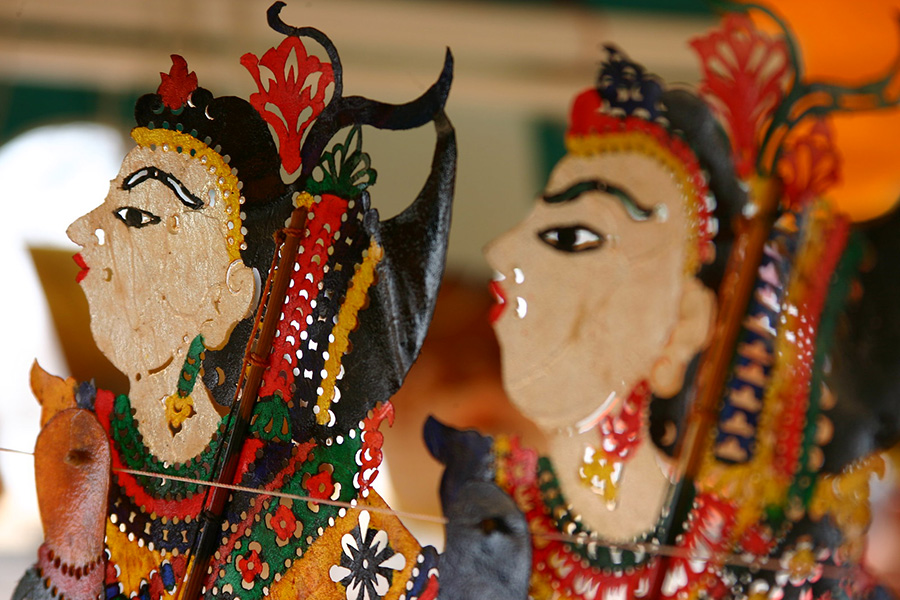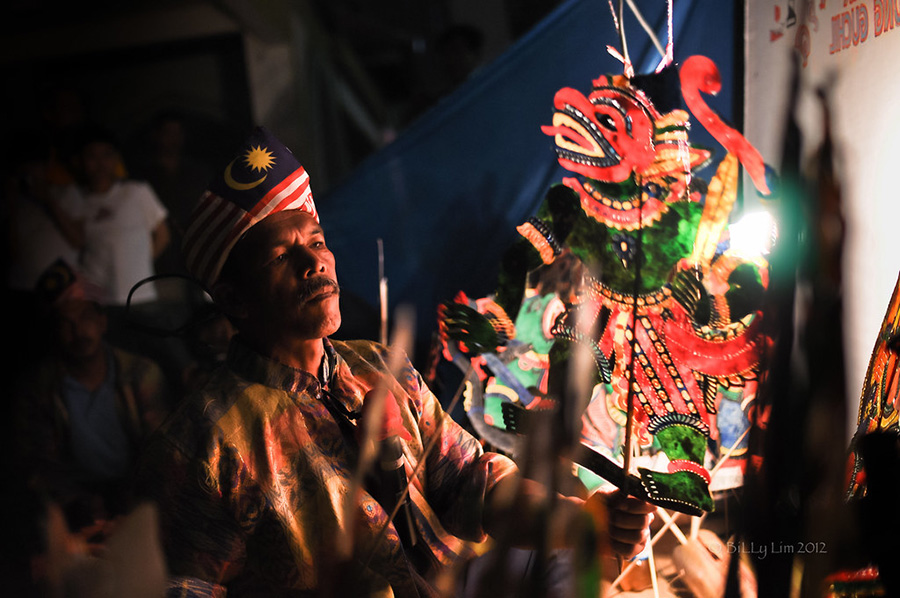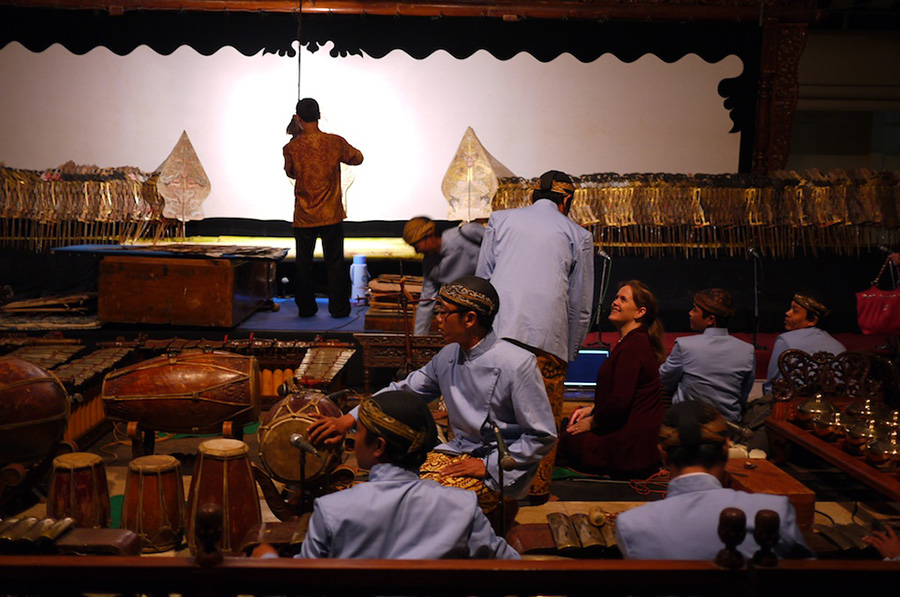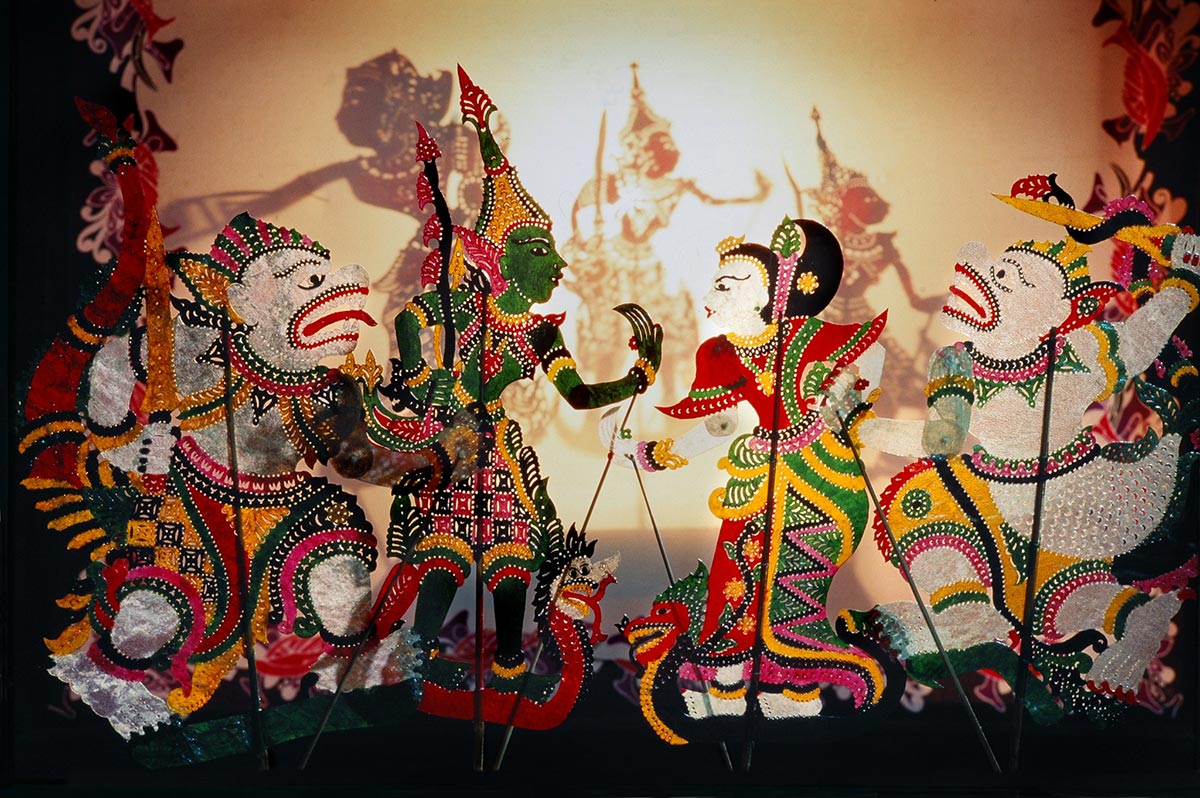A lone, flickering flame radiates its light in a dimly lit room. Soon after, a chime of gongs and metallophones fades in, adding to the atmosphere of the theater. Gently, shadow figures of various sizes and shapes emerge from behind the silkscreen, dancing to the beat of the light and the enchanting melodies played by the orchestra.
Soon enough, a booming voice appears, signaling the start of the show. This is Wayang Kulit; a traditional form of shadow puppet play that mainly originated in the cultures of Java and Bali, Indonesia.
For centuries, this traditional Javanese art form has fascinated the imaginations of many. It not only served as mere entertainment but as a tool for reflecting the spirit, culture, and even the current state of affairs within a community.
An ancient story-telling tradition of gods and men

Wayang originates from the word “ma Hyang” or journey towards the realm of spirituality. Its roots can be traced from the Javanese word meaning shadow. Although it is an umbrella term for various performances, the shadow puppet performance is mainly referred to as Wayang.
Each intricately designed and gilded puppet made from ox hide is believed to possess great spiritual power and is animated through the careful manipulation of the master puppeteer or “Dhalang.”
The universal themes of each show center on the existential struggle between good versus evil, with its protagonists following an arduous journey of life, love, and war. The stories the Dhalang presents are improvised flawlessly by the storyteller but are adapted from the Ramayana or Mahabharata Hindu epics. It is important to note that while good remains undefeated, evil is never vanquished, as both good and evil coexist in equilibrium.
From time to time, the Dhalang may seamlessly inject humor through puns and jokes and may even reflect current events. They also serve as an essential source of information within the community–making them a crucial and potential political force.
The “Dhalang” and his court

The Dhalang or puppet master plays an integral role in the success of a Wayang Kulit performance. They possess a wide variety of talents beneficial in staging the show and engaging with their audience. To be considered a “master,” they must have a repertoire of tales and have finesse in effortlessly incorporating wit and humor when telling a story.
These artisans can be likened to a conductor, directing every minute detail. They exemplify showmanship and work closely with the gamelan orchestra, designing and embellishing the leather puppets themselves. In essence, they are the very heart of every performance.
The accompanying gamelan orchestra, usually an ensemble of percussive instruments featuring wooden drums, bronze gongs, wooden flute, and a two-stringed fiddle, must be skilled enough when playing in synchrony as the Dhalang transitions from one part of the story to another. The music underscores the much-needed tension and drama that a scene wishes to evoke. This harmonious duet between the puppeteer and orchestra translates to one unforgettable and enthralling performance.
The Javanese Shadow Puppetry—a masterpiece of oral and intangible heritage of humanity
As defined by UNESCO, this art of shadow puppetry is an oral and intangible heritage that refers to “the totality of tradition-based creations of a cultural community expressed by a group of individuals and recognized as reflecting the expectations of a community in so far as they reflect its cultural and social identity.”
In 2003, Wayang Kulit was proclaimed by the international agency as part of its list of 90 masterpieces alongside Japan’s Kabuki Theater (2005) and The Hudhud Chants of the Ifugao from the Philippines (2001).
Related Article: Thailand’s Khon Dance: a Proud UNESCO Cultural Heritage
Wayang Kulit and its impact in modern times

The Javanese shadow puppetry practice transcended time and has vastly influenced artisans and performing troupes from around the world with the ongoing cultural exchange between the East and West. In the 1960s, American artists went to Southeast Asia to discover and learn more about this fascinating ancient tradition. Dhalang masters were brought to North America to collaborate with fellow artists while facilitating masterclasses about this centuries-old art form.
Iterations of Wayang Kulit have trickled down to contemporary performing arts, such as the Chicago-based contemporary theater collective Manual Cinema, which employs traditional techniques while adapting them to modern performances.
Where can I watch a performance?
At present, the ancient rituals and performances of Wayang Kulit are still regularly held at the Sultan’s Palace of Yogyakarta and Keraton Solo. Meanwhile, The Village of Kepuhsari, Wonogiri Regency in Central Java, is the perfect place for those interested in observing and learning the meticulous process of making these ornate leather puppets.
Featured photo: Haidar Abu Bakar via Flickr
Visit the Culture and Tradition section of our travel magazine to learn more about the rich heritage of our destinations.







